16
Bullying and The Media: An Analysis Through The Lens of Professional Tennis
19 Comments · Posted by Staff in Articles

By Alana Sung
Author’s Note:
This study, “Bullying and The Media: An Analysis through the Lens of Professional Tennis,”
was conducted independently by Alana Sung, a 16-year-old high school student interested in
studying the effects of media influence on social behaviors in professional sports. As a young
researcher, she undertook this project to gain further understanding of complex social dynamics
and to contribute meaningful insights to the conversation around media in professional
environments.
Affiliation: Alana Sung is a high school junior where she is actively engaged in
extracurricular activities related to math and science both competitively and in projects. Her
interest in the study’s subject matter stems from her involvement in tennis since beginning to
play at the age of 13 and her role as an co-executive editor for her school’s science, math,
technology, engineering, and art journalism organization.
Funding Information: This research was conducted without any external funding. All resources
utilized for the completion of this study were freely accessible through the online platforms.
Contributions: As the sole author, Alana Sung was responsible for the conceptualization of the
study and the data collection and analysis . Her work represents an independent inquiry into the
effects of media on social interactions and behaviors within professional tennis.
Acknowledgments: Alana would like to express her gratitude to her teachers and mentors. Additionally, she extends her thanks to her family for their unwavering support.
Ethics Statement: This study was conducted in adherence to ethical standards for research.
Given its analytical nature and reliance on publicly available data and literature, it did not
involve direct interaction with human participants, thereby exempting it from the requirement for
Institutional Review Board approval. Efforts were made to ensure the respectful and fair
treatment of all individuals and entities mentioned in the study, with particular attention to the
avoidance of defamation. Alana Sung does not dislike any player, person, or business mentioned in this paper and seeks to objectively analyze the causes and effects of their actions.
For inquiries or further discussion regarding this research, Alana Sung can be reached at
[alanaextra44@gmail.com].
The American Psychological Association defines bullying as “a form of aggressive
behavior in which someone intentionally and repeatedly causes another person injury or
discomfort.” They clarify that it can take the form of physical contact, words, or more subtle
actions. The bullied individual typically has trouble defending him or herself and does nothing to
“cause” the bullying (American Psychological Association).” Professional tennis is a
competitive environment in which there is a lot of pressure. It is an individual sport in which
each person’s success is defined by the number of times they have defeated other individuals. It is a sport that encourages ruthlessness and reminds all players that their success benefits from the downfall of others. However, there are unspoken rules in which players are expected to be gracious whether they win or lose. Often, if players are not as gracious as expected, it will be a subject of controversy in the tennis media. The Association of Tennis Professionals (ATP)
official rulebook even fines up to 60,000 USD for unsportsmanlike conduct (ATP Tour, 235)
which implies that the association as a whole still works to avoid behavioral controversies.
In addition, most of the players, despite having to compete against each other, seem to
still be friendly with each other on camera. Nevertheless, behavior is often the main subject of
the tennis media whether it is about relationships between players or echoing statements. Current ATP Number 5 (N5) Andrey Rublev was asked in an interview on April 13th, 2023 answering the question: “Who are your best friends on tour (ATP Tour on Instagram)?” in which he replied with over ten people. This interview came from the official Instagram of the ATP Tour, meaning that it was sponsored by the media itself that appears to be capitalizing on creating emphasis on relationships between players. This proves not only that players are often friendly with each other in real life, but it also reveals an important part of how the media operates. They rely on a storyline of the players not just with their tennis, but how they are with each other in order to garner more interest in the sport. This also implies that if players give unflattering statements about another player regardless if it was intended as such, it will continue to be repeated. This is evident in ATP N7 Stefanos Tsitsipas’ statement about ATP N5 Andrey Rublev, saying: “he prevailed with the few tools he had (Tsitsipas).” After this statement, the media later asked Andrey Rublev, himself, about this statement in his own press conference in hopes of gaining a public response which succeeded.
The media as a whole is “entwined in a vicious circle of mutual manipulation, mythmaking, and self-interest (“Why the News Is Not the Truth.”).” Meaning that, the tennis media that supports the association is only there to create a narrative by declaring some to be metaphorical heroes that are the protagonists in their stories. This comes out in ways such as uplifting slanderous statements about players that go against their protagonists in order to protect them. This means that with every labeled protagonist, there must be a labeled antagonist or villain to complete the story. To them, it is irrelevant what the truth is and it is only important to share their own version in hopes it will be accepted as factual. The most important part of this phenomenon is the importance of the number of people that believe this fallacy. By continuing to perpetuate this narrative, it becomes the truth and the more people that believe it, the more true it becomes. That makes people that refuse to follow such a silent plan a target because they are not fulfilling the role needed. Whether it’s the people inside professional tennis or the active fanbase, anyone who speaks is dangerous because it creates rifts in the narrative that the media is trying
so hard to uphold. In addition, this allows the players that are favored to use its backing to exert
power and bully others that do not have that with no consequences. This is especially prominent since most of the media favorites are often high-ranked, older players that have the higher skill
and experience in tennis. This gives them the power to bully younger players as the younger
players exhibit the traditional bully-victim archetype of being unable to defend themselves.
Regardless of whether it is claimed to be intentional or unintentional on the part of these favored players, intention is irrelevant because what was said cannot change. The media takes the claims of its need and strings them together in the way they desire in order to call it the truth. This means that it backs these favored players completely and thinks they can do no wrong because any flaws will disrupt the storyline. Making harsh claims about anyone has unintended consequences and can lead to false narratives that are never debunked.
This scenario is very prominent in professional tennis with ATP N1 Novak Djokovic from Serbia, not only by the media but by other players who are supported by the media who use their leverage to participate in bullying behavior. Roger Federer from Switzerland used this against him more than once. During the Davis Cup team competition in 2006, Serbia was playing Switzerland. Federer called out a then 19 year old Djokovic for needing a trainer during a five-set match against Stanislas (Stan) Wawrinka. Djokovic then went on to win the match. Federer went on to say that he doesn’t “trust his injuries” and that “he’s a joke… when it comes down to his injuries.” Although he later clarified in 2012 that there were no negative feelings towards each other, this statement was still irrelevant (“When Roger Federer Called Novak Djokovic a ‘joke’ for Disrupting Stan Wawrinka’s Rhythm.”). Roger Federer was the media’s favorite, so everything he said was always going to be taken at face value even if it was said during a time where his emotions blinded him into saying something regrettable.
His media favoritism becomes very clear since he is backed by Rolex, Mercedes-Benz,
and Nike –formerly– (Federer, Roger). However, these are just a few examples. The networth of
Rolex and Mercedes-Benz as of 2023 is 10.7 Billion USD (Smith, P) and 24 Billion USD (Faria,
Julia), respectively. Additionally, as of February 2024, Nike’s net worth is 155.48 Billion USD
(“Nike (NKE) Market Cap & Net Worth”). He is also backed by Uniqlo which is owned by the
richest Japanese man of all time, Tadashi Yanai (Campbell, Charlie). By having expensive
contracts with the multi-billion dollar companies, it is in these companies’ best interest to protect
him from media scrutiny to protect their own image to ensure they continue to generate more
income. He has support of people with infinite resources that are willing to invest and protect
him regardless of the number of mistakes he makes. This gives him behavioral freedom and
more power over others. He is also backed by sports industry ESPN that is owned by the
WaltDisney Company that has global influence (“Every Company Disney Owns: A Map of
Disney’s Worldwide Assets”). This was evident in the ESPN commercial: ESPN’s Letter to
Roger Federer’s Children. The commercial referred to him as a god and indirectly the greatest
tennis player of all time, saying that:“gods do not get passed.” They also used many series of
similes to declare him as the perfect balance between graceful, dominant, and humble. The
announcer continued to say that “they all came at him and they all fell to him major after major,
year after year. Your father dominated his sport, the way avalanches dominate trees and yet he
was so humble and decent that it became no shame to lose to him. In fact, it became a kind of
honor to lose to Roger Federer. [It] meant you were woven into the fabric of sports history
(“Special Report- the Columnist of ESPN Write a Letter to R Federer’s Unborn Baby
(090707).WMV.”).” Nevertheless, these types of statements have many implications. By
declaring Federer to be seemingly invincible and a god, it implies he is a mere idol and that everyone, including players and fans, must worship him. This indirectly villains those that refuse
to follow the theoretical religion and anyone that opposes him to be an evil that must be
eradicated. This also means that he is never accepted as flawed or criticized for his mistakes. Any form of a mistake will either be denied or covered up. By treating him as one that must not
receive criticism, this allows him to have more power over others and inflate his own self-importance. Everytime he loses, it is considered to be a tragedy rather than a triumph of his
opponent on the behalf of the majority. His losses are considered to be an attack by the great evil. Additionally, any opponent that fails to challenge him is seen as a failure for even trying. This makes it even more difficult for younger players like Djokovic at the time to go up against him and fight against these accusations. He did not have the reputation or the media backing that a figure like Federer does, so he had no way to defend himself. Additionally, he did not have the tennis skills to win as he did not beat Federer until 2007 (“Roger Federer vs Novak Djokovic: Head 2 Head: H2H: ATP Tour: Tennis”).
Although Federer said that the incident at the Davis cup 2006 was a misunderstanding
years later, the damage was already done (“When Roger Federer Called Novak Djokovic a ‘joke’ for Disrupting Stan Wawrinka’s Rhythm”). Novak Djokovic was painted as someone who is
always injured and fakes injuries. He was mocked publically and continuously by other high-profile, older players and the media for his health problems. This narrative continued to be perpetuated by other players such as Andy Roddick at the United States Open in 2008, who was an American former ATP N1 who won the tournament prior in 2003. He said in his press
conference prior to their match when asked about Novak Djokovic’s injuries that he has “ a
back and a hip [injury]… And a cramp… Bird flu…Anthrax. SARS. Common cough and cold (“US Open: Victorious Djokovic Apologises for Roddick Attack.”).” He continued to joke about Djokovic’s physical condition as reporters asked him about it specifically. Although he could
have been diplomatic, he chose not to and took the opportunity to make fun of a younger player.
Djokovic, himself, clearly saw those comments because after beating him in four sets, he said to the crowd that “Well, obviously Andy was saying I had 16 injuries. Obviously I don’t, right?…
That’s not nice anyhow to say in front of this crowd that I have 16 injuries and that I’m faking it
(“US Open: Victorious Djokovic Apologises for Roddick Attack.”).” However, despite defending
himself against these allegations about his physical condition, the crowd expressed their
relentless disapproval for Djokovic’s actions as he defended himself against their home player.
Such relentless behavior even forced Djokovic to apologize in his press conference after the
match claiming that it was his fault for what went down (“US Open: Victorious Djokovic
Apologises for Roddick Attack”). Though, not before being physically intimidated as Roddick
shoved him against a locker after the match, only to be mediated by Djokovic’s trainer who was
physically intimidating himself (Schlink, Leo). Djokovic said after the match, interview, and
fight that: “Unfortunately, Andy made a statement, and I don’t think it was intentional,” he said.
“He made a joke and it was a misunderstanding. I exaggerated and I reacted bad at that
moment. I apologise if I reacted like that (“US Open: Victorious Djokovic Apologises for
Roddick Attack”).”
In this scenario, Roddick, whether he knew it or not, used his status as a home player and
one in favor with the media as a chance to make fun of a younger one. Although to him, it
seemed to be just a meaningless joke. He failed to realize that the tennis fans at the tournament
would come to his defense and the media obliged. This does not make him a bully, but the power he has and making the statements that he did made Djokovic a target not only by the media, but to be mocked by other players. This makes him someone who was oblivious to his impact on the media’s perception of the topics he gives an opinion on and his ignorance at the time was costly.
Nevertheless, his intention lacks relevance because even if it is a joke as he claims, it still
carries value among journalists. These words, regardless of context, are not retractable. They will still be used as evidence as ways to slander and defame even though they do not hold true now or even held true ever. Despite Djokovic winning the battle on the court, he cannot win outside the court as his opponent had all the reinforcements at his sabotage, which reinforces false narratives still held today. Andy Roddick was not careful with what he said and continued the narrative started by Federer that cannot be fixed.
Regardless of what Djokovic does, he still has opportunities to be defined by his faking
injury accusations because older, more experienced players used the opportunity to publicly
bully a younger player because they knew they could. They knew there would be no
consequences which gave them a greater incentive because they had support from the media and the fans. If they knew that there would be backlash, they would have used the opportunity to be diplomatic, give a younger player the benefit of the doubt, and not involve themselves in affairs not related to themselves This gives a poor precedent that public bullying is not only tolerated, but encouraged and that the perpetrator is supported and the victim is seen as being deserving of it.
Federer himself even continued to add on to this narrative by commenting on Djokovic’s retirement in the Australian Open 2009 Quarterfinals against Roddick. Instead of saying minimal
or refusing to answer, he said that “He’s not a guy who’s never given up before. It’s
disappointing… Andy [Roddick] totally deserved to win that match. I’m almost in favor of
saying, you know what, if you’re not fit enough, just get out of here.” He also claimed that “If
Novak were up two sets to love I don’t think he would have retired 4-0 down in the fourth. Thanks to Andy that he retired in the end. Andy pushed him to the limits. Hats off to Andy (Ghosh, Pritha).” Despite Federer commenting about this situation years prior, he still continued to make these statements with no prior knowledge. All of his statements were based on the assumptions he made that were then told to the media which were accepted as the truth. He did not even acknowledge that he did not know anything about the situation and as a result, allowed the media to claim that Djokovic gives up often with absolute certainty even when there was actually zero contextual certainty. He even went on to say in that same interview that “I mean he gave up against me in Monaco this year because of a sore throat. Yes I mean those are the kind of things you know you wonder about. I’ve only given up basically once in my career (“Roger Federer on Djokovic Retiring….Again Lol.”.” Here, he is insinuating a sense of ominousness in regards to Djokovic’s situation and in addition, is using it as a chance to passive-aggressively make himself look better by comparing himself to Djokovic who he frames as a quitter. Additionally, this was information that was not shared by Djokovic himself, meaning that Federer shared private information with the media as a form of ridicule.
Similar invasions of privacy in the exposure of private opinions happened to Djokovic
again on behalf of the commentators. This incident happened during the commentary of the match between Federer and Juan Martin Del Potro at the Australian Open 2009. Darren Cahill,
current coach of ATP N4 Jannik Sinner, was commentating and randomly brought up Djokovic’s
retirement unprecedentedly. Mary Joe Fernandez, a former-professional tennis player and the
wife of Federer’s agent, Tony Godsick, was also commentating and said that Federer “expected
it (Asud).” She brought up his earlier retirement in Monte Carlo a year earlier and said that he
told Federer that he had a sore throat and proceeded to say that Federer thought that he was “soft (Asud).” In these two situations, private conversations were made public not only by Federer himself, but by theoretically unbiased officials discussing Djokovic’s personal struggles in a match that has nothing to do with him.
Although it can be argued that all of these statements are jokes that are a result of the
competitive environment, that argument is incomplete. “Attempts to justify trash talking as a
strategic ploy that implies no disrespect are disingenuous in view of the fact that its effectiveness depends on opponents’ being offended by it (Dixon, Nicholas).” In this situation, it was not all harmless fun or talk in the same nature that is professional sports. If it was a joke, it would have most likely been done in private between the two competitors. However, this was done in front of the media. A media that is willing to back one more influential player over one with less influence. It is one that has shown to lie to protect one and slander the other. That is not the nature of professional sports. Using the media as a means to attack someone else is a form of cheating, which violates the honor and integrity of sports. Anyone who does that, whether they know it or not, is being dishonorable due to the dishonest nature of their actions. True competitors who follow the rules of sport will solve their problems fairly and will not come to people looking to spread propaganda as a way to win. It can also be argued that negative relations between players instill rivalry that is beneficial to the sport. A study about the impact of
rivalry on spectators in sport said that “Rivalry plays an integral role in the allure and excitement of following sport and favorite teams. Disposition of mirth theory (Zillmann & Cantor, 1976) states that people will experience joy if someone they admire is successful and someone they loathe is unsuccessful. Additionally, sport disposition theory (Zillmann, Bryant, & Sapolsky, 1989) asserts that fans will cheer when their team is successful and their team’s opponent is unsuccessful in direct competition (Havard, Cody T. et al.).” However, this should not be done at the expense of the players’ wellbeing and reputation. Rivalries and bullying are two seperate ideas. A rivalry is two sided in which two people or teams are working towards the same goal and are competing with each other for that. A rivalry should be, but is not always, built out of respect for one another and is a form of healthy competition. Bullying is a form of
disrespect in which someone powerful abuses it to hurt someone without. Those are two seperate ideas which although appear similar, have its subtle differences.
These situations alone do not make Federer a bully, but it makes the people who are at the
receiving end of his comments a target. He is someone of massive influence and people in the media desire his opinion. Additionally, people in the media believe his opinion is worth credibility and will bring it up often. Otherwise, they would not ask him about a situation that is unrelated to his own tennis. As a player, he has an indirect responsibility, whether he knows it or not, to be diplomatic because a lack thereof can ruin the reputation of those he speaks about. Djokovic’s injuries in the year of 2023 are still questioned which has been confirmed by Djokovic himself in his press conference at the Australian Open 2023. He said that “Only my injuries are questioned. When some other players are injured, then they are the victims, but when it is me, I am faking it (Ozmo, Sasa, and Carrie Dunn).” Djokovic as of 2023 is still being accused of faking injuries over 16 years after the initial allegations in 2006. Even if Federer was just upset at that time in 2006 or whether he was just making a meaningless comment in 2009, it does not matter. His seemingly meaningless comments were of value and even those that he made off camera mattered because they were shared with the public. The media does not care about context. It cares about what was said and it was disparaging comments about Djokovic that
have carried with him throughout his entire career. What Federer said was costly and whether he intended it or not, inflicted a narrative onto a younger player who was already struggling with
media perception. Calling Federer a bully in this scenario would be an incomplete argument and
neglects the method of judging him by his actions, not his character. There is no clear method to
know or judge his character since his portrayal is disingenuous and fabricated, which makes the
judgment ambiguous. Instead, he must be judged by his actions and the causes and effects of his behavior, which at the time was careless. This does not make him cruel, instead, it makes him oblivious and unaware. Nevertheless, this does not excuse it. His actions are not there to be defended, but to be analyzed, so they do not happen again. Similarly, Roddick is also not a bully for his actions. However, his actions at the time created a hostile environment that made the infliction of bullying quite easy. Additionally, it is unfair to judge any player by their actions
once. However, it is fair to criticize them for those behaviors as they indirectly hurt someone and
made them a target. Labeling them as simply bullies neglects the analysis and complexity of
human nature. Just because they are not bullies does not make their actions better or worse.
Additionally, it does not mean they are better or worse people. It just makes them unaware,
which is not their fault. Nevertheless, by not acknowledging the causes and effects of what they did, it allows them to put a target on other players unknowingly but also sets an example to younger players that this kind of behavior is allowed and that embarrassing people publicly is not serious. This also sends a bad example to young players that are targeted by the media and that their experiences are their fault and that what they went through are not inherently wrong. It also allows for further media bias against the player that is the target. The more players that target someone, the more likely others will do the same.
Limitations:
This study has potential limitations as its evidence is selected through anecdotes and
examples handpicked by a human, which creates bias. Bias is impossible to eliminate
completely. Additionally, this study is based on interpretation of data which can vary. However, this study is primarily about patterns and pattern-recognition. It is not about placing blame, but explaining why a phenomenon happens and the effects of it. The main essence is that of cause and effect and how a situation that occurs repeatedly yields the same results and what the implications are. This study also seeks to offer solutions to these occurrences to be initiated not
just by powerful people, but by people who feel they lack power.
It is very important that the people in tennis, especially those with influence, use their
power wisely because misused power has costly consequences of constant bullying by the unfair media that ruins reputations and lives. It allows for the spread of false narratives and propaganda that are dangerous and hurt people. Nevertheless, more importantly, people that recognize these lies must stand up to these false narratives and fight back because the fewer people that believe them, the less true they become. Although there is no guarantee that these narratives will stop completely, it is important as spectators to intervene and call out propaganda before it ruins more lives because it gives the perpetrators less power and by giving a bully less power, they cannot hurt or intimidate anymore.
References:
(PDF) Development and Validation of the Sport Rivalry Fan Perception …,
www.researchgate.net/publication/264159843_Development_and_validation_of_the_Spo
rt_Rivalry_Fan_Perception_Scale_SRFPS. Accessed 12 Feb. 2024.
Asud. “Federer Thought Djokovic Was ‘Soft’ Pic.Twitter.Com/Eckrz6txut.” Twitter, Twitter, 12
Jan. 2024, twitter.com/i/status/1745953838887227786.
“ATP Tour on Instagram: ‘You Can Never Have Too Many Best Friends, Right? 😉
@andreyrublev: @rolexmontecarlomasters: #RolexMonteCarloMasters.’” Instagram,
www.instagram.com/p/Cq-_a_CAQ_j/. Accessed 12 Feb. 2024.
ATP Tour. The 2024 ATP® Official Rulebook,
www.itftennis.com/media/11553/2024-rulebook-atp.pdf. Accessed 12 Feb. 2024.
“Bullying.” American Psychological Association, American Psychological Association,
apa.org/topics/bullying#:~:text=Bullying%20is%20a%20form%20of,words%2C%20or%
20more%20subtle%20actions. Accessed 12 Feb. 2024.
Campbell, Charlie. “Uniqlo Founder Tadashi Yanai Wants to Stir Japan’s Economy.” Time,
Time, 13 Nov. 2023, time.com/6333659/tadashi-yanai-uniqlo-japan-profile/.
Clarey, Christopher. “Federer and His Agent Start Their Own Firm Representing Athletes.” The
New York Times, The New York Times, 12 Dec. 2013,
www.nytimes.com/2013/12/12/sports/tennis/federer-and-his-agent-start-their-own-firm-re
presenting-athletes.html.
Dixon, Nicholas. “Trash Talking, Respect for Opponents and Good Competition | Request …”
Research Gate,
www.researchgate.net/publication/237679419_Trash_talking_respect_for_opponents_and
_good_competition. Accessed 12 Feb. 2024.
“Every Company Disney Owns: A Map of Disney’s Worldwide Assets.” TitleMax, 13 Jan. 2023,
www.titlemax.com/discovery-center/money-finance/companies-disney-owns-worldwide/.
Faria, Julia. “Mercedes: Brand Value 2023.” Statista, 27 Sept. 2023,
www.statista.com/statistics/346764/mercedes-brand-value/#:~:text=Mercedes%2DBenz’s
%20global%20brand%20value,of%2030.3%20billion%20in%202022.
Federer, Roger. Home, rogerfederer.com/. Accessed 12 Feb. 2024.
Ghosh, Pritha. “‘if You’re Not Fit Enough, Just Get out of Here’ – When Roger Federer
Criticized Novak Djokovic for Mid-Match Retirement at Australian Open 2009.”
Sportskeeda, Sportskeeda, 5 Oct. 2023,
www.sportskeeda.com/tennis/news-if-fit-enough-just-get-here-when-roger-federer-critici
zed-novak-djokovic-mid-match-retirement-australian-open-2009.
“Nike (NKE) Market Cap & Net Worth.” Stock Analysis,
stockanalysis.com/stocks/nke/market-cap/. Accessed 12 Feb. 2024.
Ozmo, Sasa, and Carrie Dunn. “‘Nobody Questions Other Players’ Injuries – Only Mine’ –
Djokovic Hits out at Doubters.” Tennis Majors, 6 Nov. 2023,
www.tennismajors.com/australian-open-news/nobody-questions-other-players-injuries-on
ly-mine-djokovic-hits-out-at-doubters-657075.html#:~:text=%E2%80%9COnly%20my%
20injuries%20are%20questioned,me%2C%20I%20am%20faking%20it.
“Roger Federer on Djokovic Retiring….Again Lol.” YouTube, YouTube, 27 Jan. 2009,
www.youtube.com/watch?v=6S93YvQiCpE.
“Roger Federer vs Novak Djokovic: Head 2 Head: H2H: ATP Tour: Tennis.” ATP Tour,
www.atptour.com/en/players/atp-head-2-head/roger-federer-vs-novak-djokovic/f324/d643
. Accessed 12 Feb. 2024.
Schlink, Leo. “Andy Roddick Reveals He Once Had Locker Room Fight with World No.1
Novak Djokovic.” Fox Sports, FOX SPORTS Australia, 4 Oct. 2013,
www.foxsports.com.au/tennis/andyroddick-reveals-he-once-had-locker-room-fight-with-
world-no1-novak-djokovic/news-story/1c4f67e936c12a1750c97a4fcf86b963.
Smith, P. “Rolex: Brand Value Worldwide 2016-2023.” Statista, 26 Sept. 2023,
www.statista.com/statistics/980735/rolex-brand-value-worldwide/#:~:text=Global%20bra
nd%20value%20of%20Rolex%20from%202016%20to%202023&text=In%202023%2C
%20the%20Rolex%20brand,dollars%20on%20the%20previous%20year.
“Special Report- the Columnist of ESPN Write a Letter to R Federrer’s Unborn Baby
(090707).WMV.” YouTube, YouTube, 25 Mar. 2011,
www.youtube.com/watch?v=CfWmq0FFHAs.
“Tsitsipas “Rublev Prevailed with the Few Tools That He Has. ” 丨Rublev ‘Few Tools???’”
YouTube, YouTube, 19 Nov. 2022, www.youtube.com/watch?v=2dvSGgE4Rw8.
“US Open: Victorious Djokovic Apologises for Roddick Attack.” The Guardian, Guardian News
and Media, 5 Sept. 2008, www.theguardian.com/sport/2008/sep/05/usopentennis.tennis1.
“When Roger Federer Called Novak Djokovic a ‘joke’ for Disrupting Stan Wawrinka’s
Rhythm.” EssentiallySports, 9 Jan. 2021,
www.essentiallysports.com/when-roger-federer-called-novak-djokovic-a-joke-for-disrupti
ng-stan-wawrinkas-rhythm-atp-tennis-news/.
“Why the News Is Not the Truth.” Harvard Business Review, 1 Aug. 2014,
hbr.org/1995/05/why-the-news-is-not-the-truth.
Author background info
Name: Alana Sung
Age: 16
Country: United States of America
Intro to Tennis: I watched tennis on the TV as a kid since my father played in high school and he loves to watch sports. I also attended the US Open when I was 11 years old. I started playing at the age of 13 and currently play for my high school team. I also practice with people that live near my neighborhood who play at the high school near mine.
Motivation for my work: I wanted to explore the complex social dynamics that are at the core of how the media in tennis operates and how that perpetuates bullying. I also wanted to contribute to the discussion about the intersection between the media and monetary interests and how they operate and benefit at the expense of ethics through false narratives. Additionally, I wanted to spread awareness and encourage acknowledgement of unfair media procedures to prevent bullying in the future.
Alana Sung · Andy Roddick · Bullying · media · Novak Djokovic · Roger Federer · Tennis



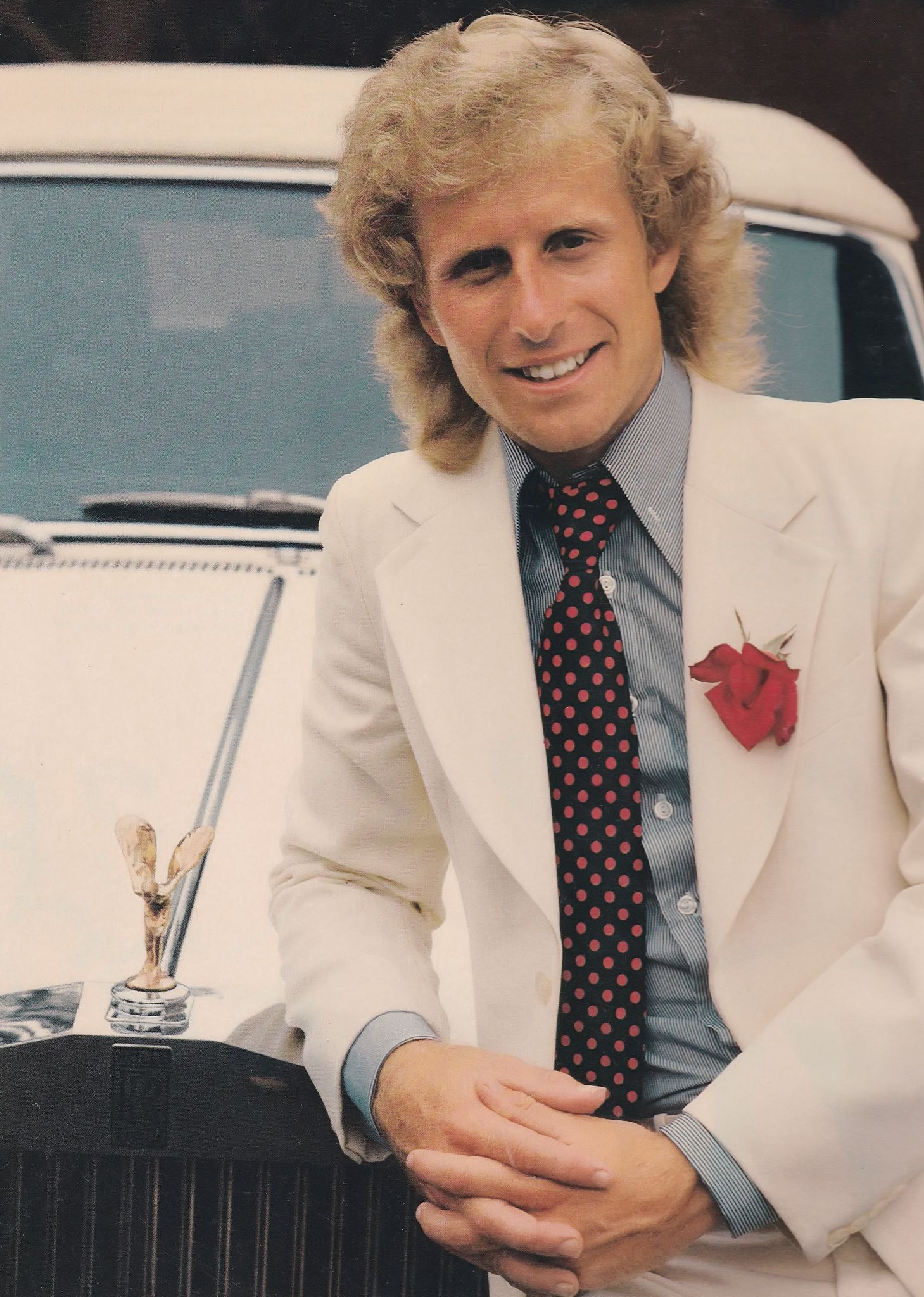
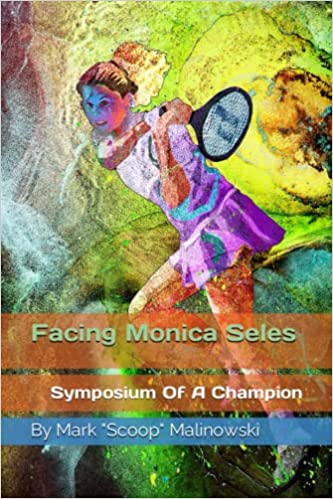





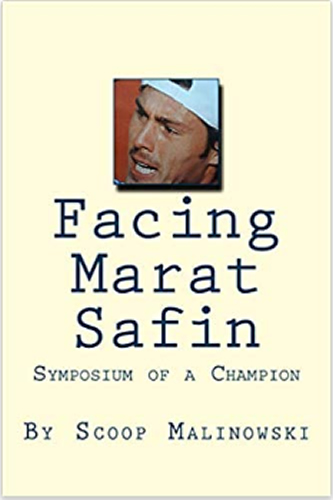
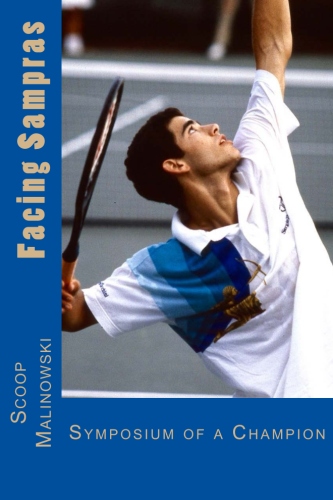
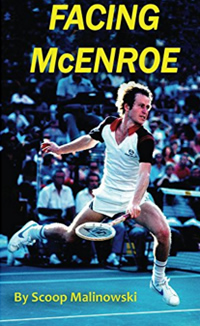



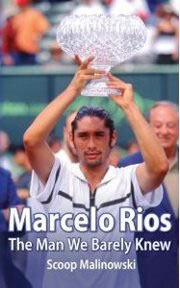

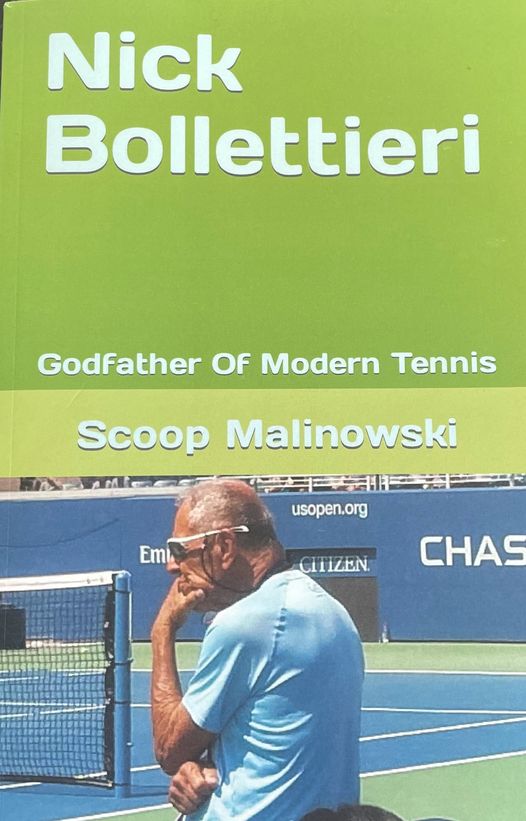

Tennis Journalist · February 18, 2024 at 2:19 pm
Interesting article but not sure what the media is supposed to do. When Fed called Novak “A joke…” or when Stef says Rubl has more “limited tools” like those are very real statements and opinions. Are we supposed to pretend it didn’t happen to not hurt people’s feelings? Shoot, I remember haters using Hingza’s “Half a Man” comment about Mauresmo for years and years even though they became friends and had no bad blood people still used “half a man.” To this day people still bring up Mac saying “I have more talent in my pinky than Lendl has in his entire body…” Those are classic comments, revealing to pretend they didn’t happen is kind of wacky.
Tennis Journalist · February 18, 2024 at 2:22 pm
What about the teenage Serena saying of Hingza “she didn’t go to school so she’s not very educated….” Or Richard Williams calling a Irina Spirlea “A tall white turkey” which he later apologized for saying. Are we supposed to pretend we didn’t hear it?
Guarantee if they didn’t have microphones on court there would be even more trash talk in the pro game. The reason there isn’t more is they all know if it’s a televised match the entire court is mic’d up so they don’t want to hear questions about trash talk. If they had no mics like back in Jimbo, Mac and Nastase days there would definitely be
Scoop Malinowski · February 18, 2024 at 5:50 pm
TJ, You make good points based on your decades of experience as part of the tennis media. There is a difference, the comments and jabs you mentioned were heat of the battle shots fired. Essentially harmless, spontaneous trash talk. Djokovic has endured an orchestrated smear campaign conspiracy by the most powerful forces in the sport which has been executed well over a decade, with the intent to assassinate the character and career of Djokovic. Fortunately the operation failed. The article by Alana has done a masterful job exposing the conspiracy. Interesting that a high school kid has the perception skills and the will power and the research and writing talent to effectively reveal an aspect of pro tennis that no one in the mainstream media ever dared to.
Scoop Malinowski · February 18, 2024 at 5:54 pm
Again, harmless one time player comments sparked by the heat of battle. Good for tennis, especially for tennis fans who are tired of all the cliches about trusting the process and compliments for the opponents and their teams. Djokovic faced, survived and overcame a decade and a half smear campaign and bullying. An accomplishment he is not given credit for. Remember Tennys Sandgren faced the same media smear campaign conspiracy for his political leanings and he’s never been the same player since he was bullied to keep his mouth shut.
Sam · February 18, 2024 at 9:11 pm
Scoop, do you also have a CliffsNotes version of this article? 😏
Scoop Malinowski · February 19, 2024 at 8:08 am
Sam, No, it’s worth the time and effort to read the whole article, one of the most important sports articles I’ve read in years. I’d like to read your comments of it.
Sam · February 22, 2024 at 8:38 pm
Scoop, okay, I’ll try to find some time to pore over the thing. 😊
Scoop Malinowski · February 22, 2024 at 9:55 pm
Worth the time Sam. Excellent work by Alana.
Sam · February 27, 2024 at 10:13 pm
Okay, Scoop, finally read the whole thing. 😏
First off, let me be honest. Although I realize she’s only 16, her piece was long-winded and clunky—and also kind of sloppy. For instance, she misspelled the word “separate” twice. 🧐
Anyway, having said that, I think her main theme is dead on 👍—that someone like Federer is considered a god by the media. As a result, he can perpetuate the bullying of other players like Djokovic scot-free.
A quote from the article:
Nevertheless, his intention lacks relevance because even if it is a joke as he claims, it still carries value among journalists. These words, regardless of context, are not retractable.
She’s correct that Federer’s intentions don’t matter that much. To support this idea, here’s a quote from an article on the Web that discusses abuse:
Consider the case of child abuse. There are two accepted criteria used in defining child abuse that can be helpful here: 1. Actions that result in abuse, and 2. Impact on victim. For example, refusing to take a sick child to the doctor may be found to be abuse/neglect whether or not the child recovers. Or, in another example, one parent routinely expresses paranoia that aliens are trying to hurt them. One child appears resilient and unbothered while the other child becomes suicidal. The impact on the second child is what may lead to a finding of abuse. Note that intentionality is not a criteria [sic] for whether a finding of abuse is valid.
In a nutshell, a person can be guilty of inflicting abuse whether or not it was intentional. 😬
Just curious—was this article published? If not, how did you hook up with Alana?
Scoop Malinowski · February 28, 2024 at 8:08 am
Steve, a couple of misspells are understandable, I’ve seen worse in Sports Illustrated and New York Post. But good editing eye catch by you. I found the article on twitter as a Nolefam I follow was very impressed about it and reposted it. So it kind of went viral and got a lot of play. I was also very impressed by the quality and range of the article. After a couple of days when it started to fizzle out I wanted to give it a second wind and offered to post it here and pay her. So that’s how it ended up here. Still hard to believe a high school kid could write an article better than anything by some of the biggest names in the tennis media.
Sam · March 3, 2024 at 7:06 am
Scoop, oh, I thought maybe Alana submitted it as part of a school assignment or something. Yes, it’s a very brave piece of work. With some serious editing (probably cutting the length in half, since there was a lot of repetition), it could be even more effective.
Just curious—what was the reception to her article on Twitter?
Sam · March 3, 2024 at 7:08 am
Steve, a couple of misspells are understandable
So now I’m Steve? Okay, I’ll make a note of that. 😉
Scoop Malinowski · March 3, 2024 at 7:56 am
Sam, not Steve, very positive, Nolefam was very impressed, as I’m sure everyone was. She made a very strong first impression. She’s now on the radar in the tennis media already at 16. Incredible.
Scoop Malinowski · March 3, 2024 at 7:57 am
UEs happen sorry Steve, pardon Sam )
Sam · March 7, 2024 at 4:26 pm
Sam, not Steve, very positive, Nolefam was very impressed, as I’m sure everyone was. She made a very strong first impression. She’s now on the radar in the tennis media already at 16. Incredible.
Great to hear, Scoop. Just curious—do you happen to have a photo of her?
Sam · March 7, 2024 at 4:27 pm
UEs happen sorry Steve, pardon Sam )
Oh, don’t worry about it, Butch . . . er. . . . Scoop. 😂
Scoop Malinowski · March 7, 2024 at 6:58 pm
Sam No I have no photos of Alana.
Scoop Malinowski · March 7, 2024 at 7:00 pm
That’s a new one, have had Skip Spike Pooper Scooper from Fox NFL analyst Jay Glazer back in the 90s when we both covered the Giants, not very kind, but he became a nicer guy.
Sam · March 11, 2024 at 9:57 pm
Jay Glazer—doesn’t ring a bell, Scoop, but I’m glad he became a nicer guy. 😎
That’s fine about Alana. Sometimes it’s nice to match an actual face to an article, though. But at only sixteen, Alana is probably better off erring on the side of privacy.